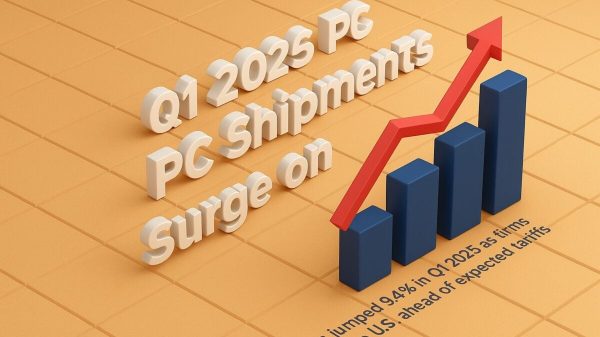For years, it has been assumed that the Democratic Party had a distinct demographic advantage over the Republicans: Younger and non-White voters — two groups that have some significant overlap — preferred Democratic candidates by wide margins. Over time, and as America grew more diverse, that might lead to a dominant, left-leaning coalition.
The election of Barack Obama in 2008 seemed to be a manifestation of this emerging dominance, triggering consternation on the right. But polling from Gallup released Wednesday suggests that 2020 was another tipping point: Those voters, reliably supportive of Democrats, have started shifting right.
Gallup surveys thousands of Americans a year, generating annual averages of how different groups view politics and political issues. That includes assessments of individual partisanship, with respondents asked whether they identify as Democrats, Republicans or independents. The growth in independent identification over time has led to a bit of refinement: Since many independents tend to vote with one party or the other, respondents are asked which party they might lean toward.
The result is that, for various demographic groups, Gallup has estimates of how much more or less likely its members are to identify as Democrats (or Democrat-leaning independents) than as Republicans (or Republican-leaning independents). That data goes back decades, allowing us to visualize the gap over time.
We break out different categories in a second, so don’t worry about tracking individual lines right below. But do notice that there are broad patterns, with most lines swinging first to the right (during the administration of George W. Bush) and then back to the left in the Obama era. Since then, trends are harder to pick out — except that very obvious recent rightward swing among Black respondents, the line at far left.
Isolating racial groups, we see that it isn’t only Black Americans but also Hispanic Americans who have shifted right since 2020. Again, this is the margin between those who identify as Democrats and Republicans (plus leaners), so it’s a bit exaggerated: a 1-point swing from Democrat to Republican is a 2-point shift in the margin. (Democrats minus one; Republicans plus one.)
You might also notice that White Americans also have been drifting more to the right in recent years, though more subtly.
If we isolate responses by age, we see an interesting pattern. The gap in partisan identification between old and young really widened in the Obama era, lasting for more than a decade. But in recent years, again largely since 2020, it has narrowed. The youngest Americans are still the most heavily Democratic, but the difference between them and the most-Republican age group (those ages 50 to 64) is only 18 points. (In 2016, it was 35 points.)
There are also interesting shifts by education, though they are a bit hard to spot below. Notice how the line for college graduates begins at the far right in 1999 before shifting to the left over time. The solid line, those with no college experience, begins at the far left in 1999 and slowly moves dramatically to the right.
We can visualize some of these shifts (including the one on education) more clearly by looking at the change in margins since 2008, the year Obama was elected.
Again, here’s every group. Notice that most of the lines have dropped; the margin has shifted to the Republicans since 2008.
The exceptions are the two most-educated cohorts. Those with college degrees are the only ones who are more Democratic in their identification than they were 15 years ago. Those without degrees have shifted to the right — in the case of those with no college experience, quite dramatically.
Gallup’s data on Hispanic identification doesn’t go back to 2008, making this comparison impossible to do. But we can see the change among White and Black Americans, the latter of whom have, again, shifted the most dramatically to the right.
There are certainly a number of factors at play here that, for the sake of brevity, we can leave to others. It is also the case that shifts in one direction are often followed by shifts in the other direction, as the first chart above demonstrates.
Entering the 2024 general election season, though, it seems safe to say that the Democratic coalition one might have expected to see by this point in the country’s progression has not manifested as predicted. President Biden’s reelection prospects remain tenuous, with his team clearly hoping that he’ll still be able to rely on the constituencies that made him vice president in 2008. But if he does win a second term in office, it may be with a very different coalition of voters.


































